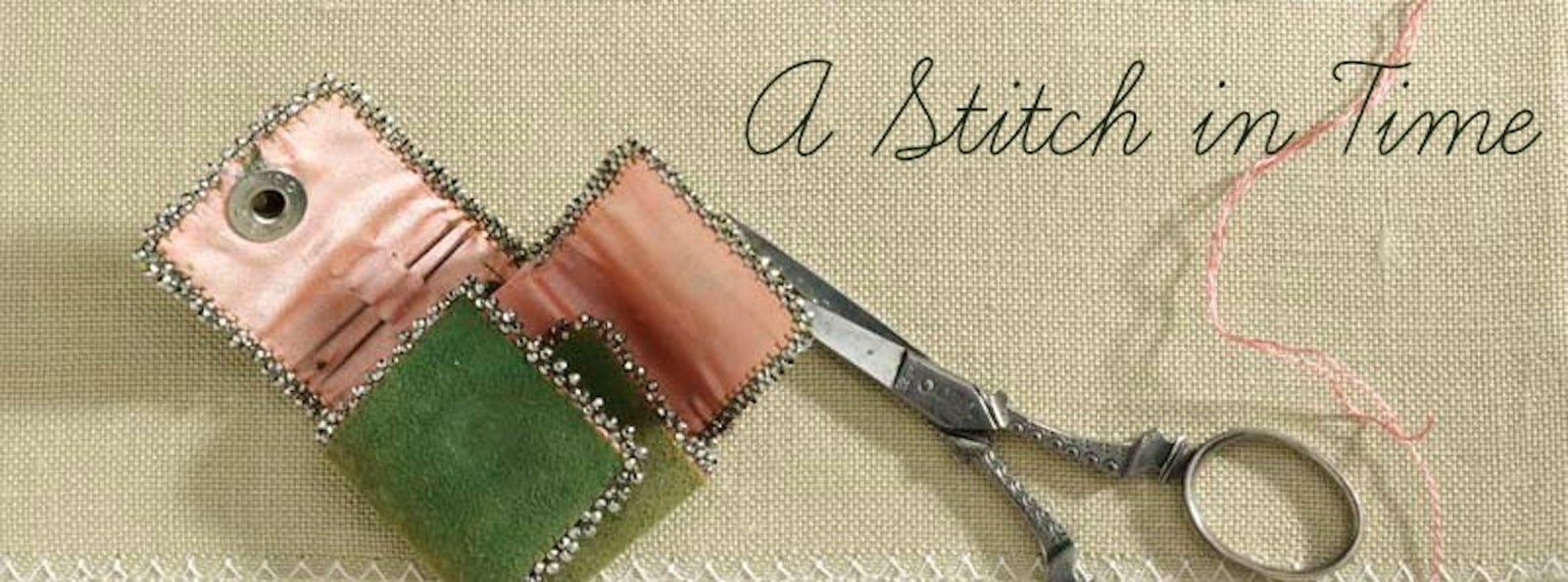The Portuguese stem stitch, a heavily textured line stitch, also is known as Portuguese knotted stem, Portuguese knot, and wrapped stem stitch. Although little history is known about this particular stitch, we assume that, because of its name, it either originated in or was a popular stitch in Portugal at some time.
On the other hand, Portuguese embroidery as a whole has a fascinating history. In the late Middle Ages the Portuguese excelled in maritime exploration. Vasco da Gama (circa 1460–1524) reached India by way of the Cape route around Africa in 1498, while other Portuguese navigators of the time established trading posts on the coasts of Arabia, other parts of India, China, Malaya, and the East Indian islands. The Portuguese imported the distinctive and beautiful Indian back-stitched bedcovers and hangings and other embroideries known as Indo-Portuguese embroideries. By the late sixteenth century, however, Portuguese embroiderers created embroideries that so closely resembled the Indian work that now it is difficult to identify the provenance.
The Portuguese stem stitch (Figures 1A–1H) is a variation of the well-known and much-used stem stitch, with two whipping or wrapping stitches worked around adjacent stem stitches. It’s easy-to-work, creating a rather heavy, twisted, ropelike line of stitching.
Left to Right: Figure 1A and 1B
Work this stitch upward from the bottom to the top, turning the fabric when necessary. The wrapping threads do not pierce the fabric and should be pulled fairly firmly. Always place the second wrapping stitch below the first (Figure 1B), to create a knotlike appearance. You may need to guide the second wrapping stitch below the first with your thumbnail. For the second stem stitch (Figures 1C and 1D), slip the needle under the portion of the first and second stitches that overlap (Figure 1E), and wrap this area twice. Continue to alternate a stem stitch with the two wrapped stitches. To end a line of Portuguese stitches, pierce the fabric with the needle after the second wrap of the last stitch (Figure 1H) and knot off on the wrong side. A line of back stitches appears on the back of the fabric. The Portuguese stem stitches should be of the same length along a straight line but lengthened or shortened around curved lines.
Left to Right: Figures 1C and 1D
Generally, any type of thread, such as pearl cotton, stranded silk or cotton floss, yarn, flexible metallics, and narrow ribbon, may be used for this stitch. Fuzzy threads, however, may mask the distinctiveness of the stitch and rigid metallic threads will be nearly impossible to wrap around the stem stitches. The Portuguese stem stitch may be used equally effectively on evenweave fabrics, such as Aida, Lugana, and linen, and nonevenweave fabrics, such as sateen, wool, and cotton twill.
Left to Right: Figures 1E and 1F
Left to Right: Figures 1G and 1H
The Portuguese stem stitch is ideal for heavy, textured outlines (either curved or straight), borders, and bands, as well as for plant and leaf stems and ropelike line motifs. Although not traditionally used in Jacobean crewel work, the Portuguese stem stitch would make a wonderful addition to this style of needlework.
—Deanna
This tenth installment of Deanna’s stitch tutorials originally appeared in the July/August 2003 issue of PieceWork, along with instructions for a Quaker sampler and much more. Deanna is PieceWork’s needlework technical editor; she previously was the editor of The Needleworker magazine. Read the entire "Stitch in Time" series!





